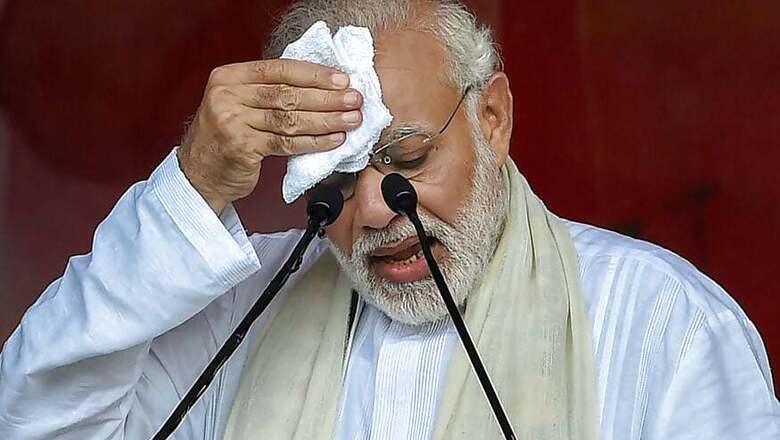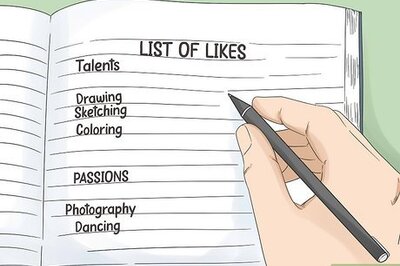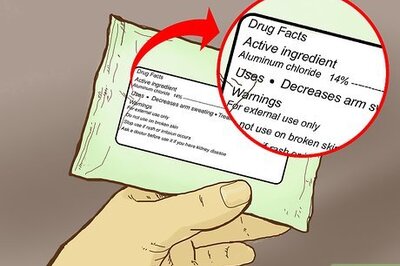
views
The Narendra Modi-led NDA will face its first no-confidence motion on Friday. The countdown to voting on Friday evening may not turn out to be a nail-biting thriller, given that the biggest party in Lok Sabha — the BJP — can theoretically cross the half-way mark hurdle by itself.
But why then has the seemingly united opposition, including the Congress, thrown its weight fully behind the no-confidence motion? Between the ruling NDA and the opposition, which political bloc is under greater pressure to prove itself?
History
There will be a sense of deja vu for the party veterans who remember what happened when Congress introduced a no-confidence motion against the then Atal Bihari Vajpayee-led government, back in August 2003.
Even then the no-confidence motion was a foregone conclusion and as it turned out, BJP won it comfortably with 312 votes against opposition's 186.
But that's not where the similarities end. Assembly elections of four states — Chhattisgarh, Rajasthan, Madhya Pradesh and Delhi — were due that year, as is the case this time minus Delhi. Another thing — the no-confidence motion was floated just a year before general elections.
Though the effects of the no-confidence vote over assembly elections are at best unnoticeable, BJP won all these states except Delhi. But the Congress was able to get some of the opposition parties together, and the fact that it was able to trounce BJP in 2004 Lok Sabha polls is a chapter of history that Congres would like everyone to go through.
For the opposition parties, the fact that lot of exchequer's money will be wasted in this exercise whose results are almost predestined may not matter much.
Timing
The no-confidence motion comes at a very interesting time for the opposition parties — right after Karnataka polls, where Congress + JD(S) were able to keep BJP out of power, and just before probable elections for the chair of Rajya Sabha deputy chairperson, where again BJP is unlikely to win.
The upper house of the Parliament has been functioning without a deputy chief since June 30 when Congress leader PJ Kurien retired.
Although there have been reports of a possible delay in holding elections for this chair, a consensus among opposition over the choice of candidate could be a huge morale booster before 2019 general polls. The number of parties that would lend support to an opposition candidate could indicate whether they could overcome their ideological differences and engage in a working relationship ahead of the crucial polls.
Key Players
But just before the elections for deputy chief of Rajya Sabha, the no confidence motion on Friday could clear the air on how divided or united each camp is.
The reaction of the Biju Janata Dal (BJD) for instance will be watched with acute interest. The party has 20 MPs in the lower house. So far BJD has placed itself neither with the opposition (it was significantly absent from HD Kumaraswamy's oath ceremony) nor with the BJP with which it is locked in a two-way contest in Odisha polls next year.
Similarly all eyes will be set on the reaction of Shiv Sena which has a substantial strength of 18 MPs in the lower house. Which side of the table will the Shiv Sena find itself on Friday, given its history of regularly threatening to pull out of its alliance with BJP in Mahasrashtra and all its criticism of Modi and Amit Shah?
While AIADMK seems unlikely to vote against BJP at the moment, will the pressure of Cauvery water dispute, the delay in formation of Cauvery Management Board, compel it to do something surprising?
Pressure game
Finally one question everyone will ask before the house begins on Friday is — who between BJP and opposition ranks will be under greater pressure?
From opposition’s point it will certainly be the BJP. The party triumphed in 2014 and brought 282 MPs to the 16th Lok Sabha, 10 more than the number required to form government. It also brought along allies like the Shiv Sena, LJP, Akali Dal, Apna Dal to end up with a mammoth 336 member ruling coalition.
But since then BJP has lost most of the Parliamentary bypolls held in the country. It currently has 273 MPs, just one more than the halfway number. Moreover, it has had a clear problem in handling its allies. N Chandrababu Naidu has not just broken away from NDA, his party – the TDP – is the one that has initiated the no confidence motion. Other allies like JD(U) and most visibly the Shiv Sena have often made their differences known.
So even if the BJP clears the trust vote, it would be a margin that would surely be less than its 2014 victory. That is, perhaps, where the opposition will draw solace from.
Plus, in the day long debate, the opposition is likely to raise all sorts of issues to embarrass the government, from Rafale deal, mob lynchings, communal polarization to the agrarian crisis.
From BJP’s point of view, they will have a chance to show that the allies are safely tucked within the NDA. The day long debate before the trust vote will also give the Prime Minister a platform to voice his concerns, recount his achievements, while blaming the opposition for not allowing Parliament to function.
The BJP high command will try to ensure that despite differences between BJP and its allies, none of BJP’s partners in NDA vote against it or even abstain.
The last time no-confidence motion was floated in the Lok Sabha in 2008 over nuclear deal with the US. Mamta Banerjee-led Trinamool Congress decided to abstain, though she has put the weight of her entire party strength – 34 MPs behind the no confidence motion. Among the others who abstained were MPs of Akali Dal, Shiv Sena, JD(U) - all of who are BJP allies. Interestingly four MPs from BJP itself abstained from voting. BJP still has MPs that could vote against it, like Shatrughan Sinha, Savitribai Phule and Kirti Azad.
In the end it will come down to the numbers. Does the opposition camp have enough? Sonia Gandhi who rhetorically claimed, “Who says we don't have the numbers?" certainly thinks so. Though BJP leader Ananth Kumar who claimed, “All NDA parties are going to vote unitedly," doesn’t seem to think so. In less than 48 hours we’ll find out.


















Comments
0 comment